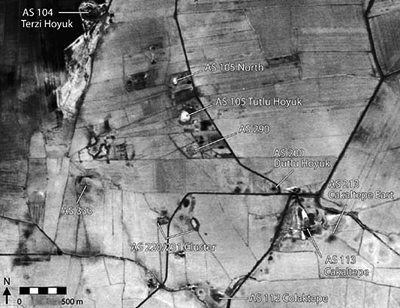April 2007 (111.2)
Article
Structural Transformations in Settlement Systems of the Northern Levant
By Jesse Casana
Based on archaeological survey evidence from the Amuq Valley (Turkey), this article explores the settlement history of the northern Levant, describing changes in the structural organization of settlement over time. While most of the earliest sites in the region are small and short-lived, beginning ca. 3000 B.C.E., settlement became concentrated at about 100 nucleated tell sites located exclusively in lowland plains and river valleys. These towns were continuously or periodically occupied through the Iron Age but were largely abandoned by the Seleucid period. At that time, the city of Antioch was founded in the Amuq Plain, and previously unoccupied highlands became densely populated by small farmsteads and villages. This phase of settlement reached a peak in late antiquity but was followed by a progressive abandonment during the Early and Middle Islamic periods. Local historical evidence, including the Middle–Late Bronze Age Alalakh texts and Late Roman writings of Libanius, sheds light on some of the social forces, such as institutions of land tenure and the organization of the agricultural economy, that likely contributed to the formation and durability of these distinctly different settlement systems. Results challenge traditional views of settlement in the northern Levant and highlight some of the most significant transformations in the organization of the cultural landscape.
